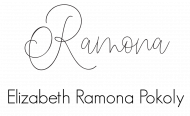What Is Reiki?
There is a non-physical ubiquitous energy that gives life to every living organism. For many thousands of years we have known of this energy and have sought to develop ways to harness its power to heal and influence our lives. The Japanese call this energy Ki. It is also known as Chi by the Chinese, Prana by a number of Asian cultures and the Holy Spirit or Light by most of the western world.
We carry this energy in and around our bodies from the moment we are conceived. Science has established its existence, and with the aid of Kirlian photography we are able to see this energy that encompasses all living things. Ancient Eastern cultures have harnessed and applied this energy for healing since before the birth of Jesus Christ.
Many successful disciplines such as Reiki, Tai Chi, Feng Shui, Meditation, Yoga and Acupuncture have been developed to control and greatly enhance the flow of this energy in and around the body. The energy itself is pure and has omniscient wisdom.
Reiki is a form of hands on healing, with its origins in India and the East dating back many thousands of years to the time before Christ and Buddha. The original name, disciplines and techniques of Reiki were lost due to the traditional method of passing knowledge from generation to generation by word of mouth. Exactly when this ancient art of healing disappeared is difficult to determine. However, we do know that it was rediscovered by a Japanese Scholar and monk name Dr Mikao Usui. It was in fact Dr Usui who fashioned the name REIKI.
Reiki is a two syllable Japanese word meaning universal life force. Although the proper Japanese pronunciation is RYE-KEY, it has been westernised to RAY-KEY.
- Rei means universal, omnipresent – present everywhere at the same time. Esoterically Rei means spiritual consciousness, the omniscient wisdom from God or the higher self.
- Ki is the non-physical vitality that gives life to all living things. Many cultures understand and recognise the importance of Ki energy and how it impacts our lives and well-being.
- Ki energy can be activated for the purpose of healing. When you feel healthy and full of enthusiasm, the flow of Ki energy in your body is high and unencumbered. Life seems easier to deal with and you have a higher resistance to illness and disease.
- When your Ki energy is low because maybe you are under stress or feeling unhappy and tired you will be more susceptible to disease and sickness. Your attitude will be generally negative and you will find it difficult to deal with life’s challenges. Ki is the very essence of the soul; it leaves the body when a person dies.
Reiki healing differs from other touch healing due to the use of symbols in its teaching process. In teaching the symbols are used like a key to open up the energy pathways. When the symbols are active and the person is attuned that person will then facilitate the universal life energy for themselves or to heal others. The attuned person does not tap into themselves to release energy store in them or for them and they do not direct that energy when it is channelled. I have found Reiki to be one of the easiest methods to learn to self-heal and heal others with the least amount of personal intervention. Aside from attunements the symbols can be used as a focal point for the practitioner when giving a healing but are not necessary to give a healing- in my option.
For those interested in learning Reiki. Symbols History: Reiki symbols are generally considered sacred and essentially part of the Reiki practice. They originate from Japanese Kanji and are basically words from the Japanese language. The symbols had been kept secret and given with the corresponding attunements.
The three important symbols are Cho Ku Rei or the power symbol, Sei He Ki or the emotional and mental healing symbol, and Hon Sha Ze Sho Nen or the distance healing symbol. All given within Level 1 and Level II depending upon the teacher. The other one is a master level symbol, Dai Ko Myo.
Reiki uses an attunement process involving the symbols and this can be done in person or at distance. The attunement process is the difference between Reiki and other touch healing system. Attunements open and expand the Ki-holding capacity of the Hara Line and clear any energy blockage. This opening is where the energy draws down through the practitioner to the client or teacher to student. During an attunement energy carrying the reiki symbols moving from the crown to the receiver’s Heart. Earthly Ki is drawn through the legs and lower centers from the Hara Line to the Heart as well. All this is done without taking on any karma, illness or traits by either person.
Symbols help the Reiki practitioner focus the healing energies. They are said to be scared and transcendental in nature. Symbols are easy to find and identify on-line however traditional Reiki states that attunement expands the practitioner energy capacity and activates the symbols. It has also been stated that the symbols reach the subconscious mind of the practitioner and connects one to God/Source/Universal consciousness.
When learning Reiki one practices drawing each of the symbols. This exercise is also used to focus and direct intention when learning, giving treatments and giving attunements. There really is no wrong way to draw the symbols and you may encounter people who draw them slightly different. “What is important is the intention of the practitioner when using them.
They can be activated (when you are attuned) by drawing them with the hand in the air, by visualizing them, by pronouncing the names of them (out loud or to yourself). One can also think about them.
